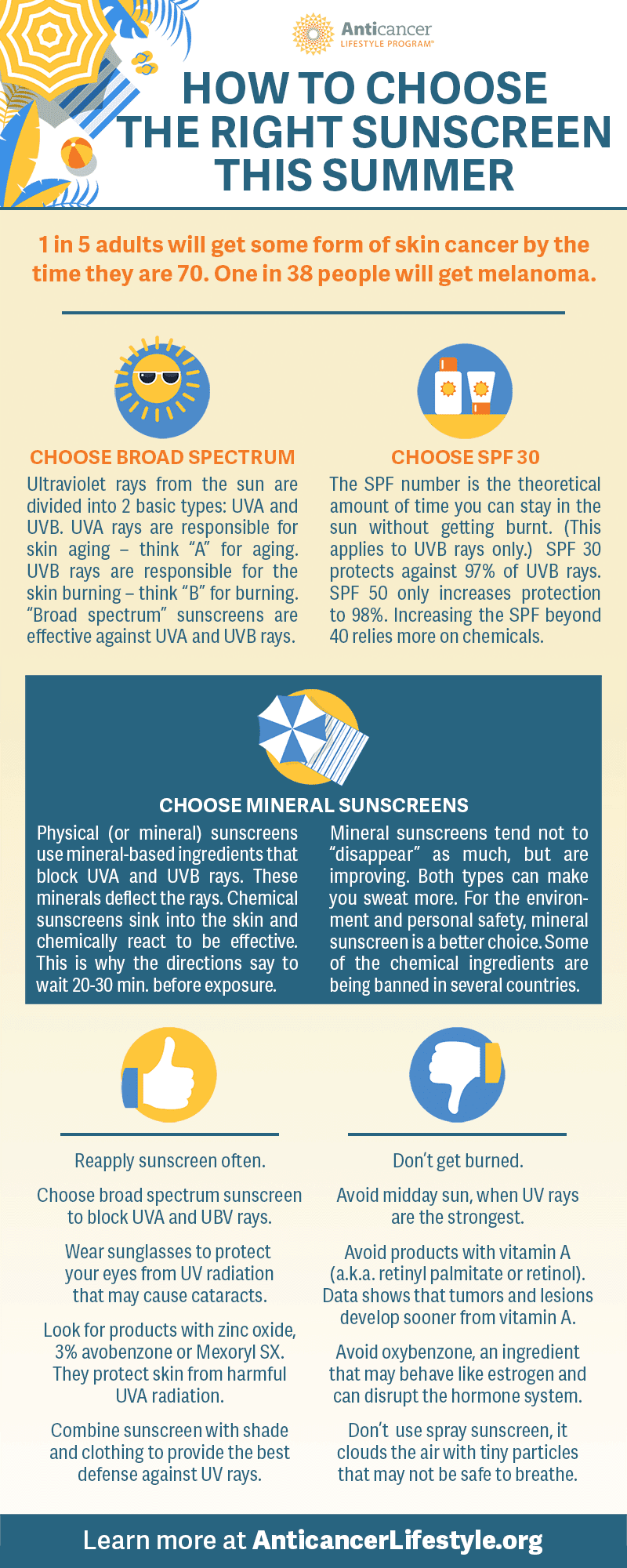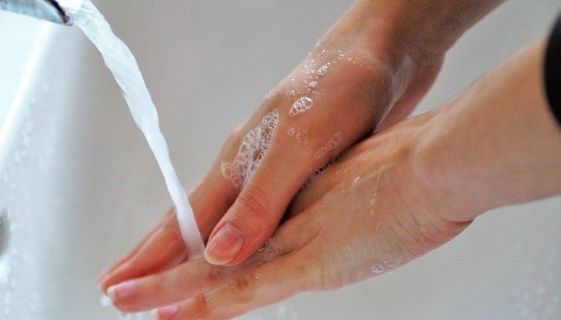Believe it or not, sunscreens haven’t always been around. I might be dating myself, but our idea of sunscreen growing up was putting on a thick, white layer of Noxzema moisturizing cream on your nose. I was brought up in the era when tans were thought to be healthy, and an indicator of leisure activity—fun by the pool, not labor on a farm. Even in the 80s and 90s, the idea of sunscreen was baby oil, offering what we’d consider a laughable level of protection today.
But the effects of sun exposure finally caught with us. Now, 1 in 5 adults will get some form of skin cancer by the time they are 70. One in 38 people will get melanoma. These startling statistics woke people up, and now habits have changed.
Protective sunscreens began appearing in the 90s, but didn’t really take off until into the 2000s. But abundant choices and confusing technical terminology make selecting an effective non-toxic sunscreen seem daunting.
Let’s review a few basics so you can make informed purchasing decisions when it comes to sunscreen.
UV Rays – Ultraviolet rays coming from the sun are divided into 2 basic types – UVA and UVB. UVA rays penetrate deep into the skin and are responsible for the skin aging (yes, wrinkles) – think “A” for aging. UVB rays affect more of the top skin layer and are responsible for the skin burning – think “B” for burning. “Broad spectrum” means the sunscreen is effective against both UVA and UVB rays.
SPF (sun protection factor)– In general, the SPF number refers to the theoretical amount of time you can stay in the sun and be protected without getting burnt, compared to unprotected skin. For example, SPF30 allows you to stay in the sun with less risk of sunburn for thirty times longer than you would if you weren’t wearing sunscreen. (This indicator applies to UVB rays only, not UVA.) But the difference between an SPF 30 and an SPF 50 is not what you might think. An SPF 30 protects you against 97% of the UVB rays, which is great. An SPF 50 only increases that protection to 98%. Increasing the SPF beyond 40 becomes increasingly difficult and relies more on chemicals. Which brings us to…
Physical (mineral) versus chemical sunscreens. Physical (or Mineral) sunscreens use mineral-based ingredients like titanium dioxide and zinc oxide. Zinc oxide can block both UVA and UVB rays. These minerals act as shields and deflect the rays from the skin. Chemical sunscreens sink into the skin and need to chemically react before they can be effective. This is the reason directions will say to wait 20-30 minutes before sun exposure. The chart below, produced by Reef Repair, shows the typical ingredients used and their ability to protect from the different UV rays. As you can see, the two mineral sunscreens do a good job.
There are pros and cons to different sunscreens. The mineral-based ones tend not to “disappear” into your skin as much, but they’ve gotten better over time. Both types can make you sweat more. (That’s where a hat and sunproof shirt come in handy.) With respect to the environment and personal safety, physical/mineral sunscreens are a better choice. I personally am a little creeped out by the thought of having to wait for chemical reactions to take place on my skin to enable a product to work! It is worth noting that some of the chemical ingredients are beginning to be banned in several countries. Some ingredients, like oxybenzone, can behave like endocrine (hormone) disruptors in our bodies.
The Environmental Working Group has a fabulous sunscreen guide, which they update yearly. Find the guide here to learn which sunscreens are both safe and effective.
Have a wonderful and safe summer!



 Deborah deMoulpied
Deborah deMoulpied 



